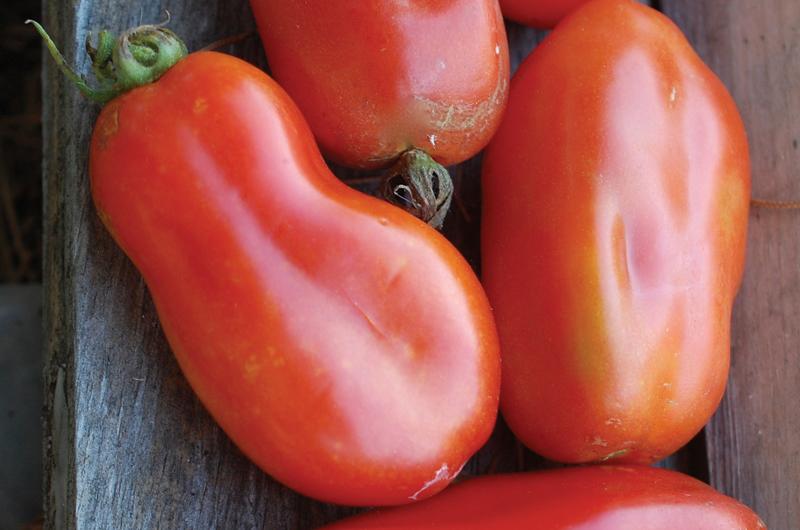My sister loves to shop. And to cook. This is a precarious genetic combination inherited from our grandmother Honey, who could never pass up a bargain, especially an edible one. Honey, at least, had an excuse – a household of nine to feed every day. Fortunately, she was fearless about preserving, too, so nothing went to waste. (We ate a lot of succotash and beach plum jelly all winter.) If Honey were alive today, she’d be right there with my sister eyeballing that ten-pound box of vine-ripened tomatoes at the farmers’ market in September.
You know those tomatoes: they appear at Morning Glory Farm or Ghost Island Farm or the Whippoorwill Farm CSA in early to mid-fall with a big message about discount pricing. Or they suddenly start flying out of your garden – too many, too fast…too late. Why weren’t they ripening like this in July, when your twenty-two house guests from Virginia all wanted BLTs for lunch and insalata caprese for dinner? Now, weeks, months later, it seems like maybe we’ve had enough of tomatoes for a while. But give us one minute of winter and we’ll be pining for them. So we can’t look the other way; we must do something with them!
Witness:
“Hello?” It’s my sister calling, just home from the market. “Sue, what do I do with all these tomatoes?” I tell her to roast and freeze them. She calls back and says, “I made sauce.” She frequently ignores my advice, since she was actually first in line to inherit Honey’s cooking genes.
“I made sauce, with butter, like Marcella Hazan does in her book,” she continues. (That would be the late mistress of Italian cooking and her epic Essentials of Classic Italian Cooking.)
“Butter?” My ears perk up. In my family, we’ve never met a dairy product (whole fat preferably) that we didn’t embrace enthusiastically. Isn’t olive oil the usual fat of choice for tomato sauce?
“Dad says it’s the best tomato sauce he’s ever had,” my sister brags. Of course, now she’s Dad’s favorite. Figures.
I hang up the phone and go into the kitchen. It is late summer on the farm and I’ve got a daily incoming missile of tomatoes – tomatoes that fell off the vine, tomatoes that have a spot of rot, tomatoes that are overripe, tomatoes that split.
I melt a very generous amount of butter in my biggest (well, second-to-biggest) Dutch oven.
I ignore the rest of Marcella’s recipe (which, after all, uses canned tomatoes and contains no garlic whatsoever – horrors!) and remember how I learned to enhance tomato sauce with a generous amount of carrots (and onions, of course) when I was cooking at Al Forno restaurant in Providence, Rhode Island.
I also do not peel the tomatoes. In French cooking school, this degree of fuss was encouraged, but I find it quite annoying. If I (and I think many of you potential sauce-makers) have to peel tomatoes first, those tomatoes are going to rot before they ever make it into the sauce pot. So I simply plan to use my handy immersion blender to blitz the whole thing in the pot when I’m done.
I cook the sauce down quite a bit; this is really the secret to a tasty sauce. I purée it. I love it. I call my sister.
“What do I do with all this eggplant?” she says, fresh from a farmstand pit stop.
Put sauce on it, I say.

A Note About Sauce Tomatoes:
The best tomatoes for sauce are meaty plum (aka paste) tomatoes, which have a high ratio of meat to juice and seeds. This year I grew a very prolific and tasty heirloom variety called Martino’s Roma. I found it easier to grow than the famous San Marzano, which does yield a very meaty, tasty tomato, but the fruits are quick to fall off the vine. Other good plum tomatoes to grow are La Roma and Opalka. Keep in mind that plum tomato varieties are often “determinate,” meaning they tend to yield all at once, or at least within a specific window. “Indeterminate” tomatoes will grow continuously until frost. Since we have such a long, beautiful fall on the Vineyard, there are weeks when we still have a lot of beefsteaks coming off the vine (they’re indeterminate). You can certainly preserve them by turning them into sauce too. You’ll just have to cook the juices down a bit more.
The following recipe was originally published along with this article:






